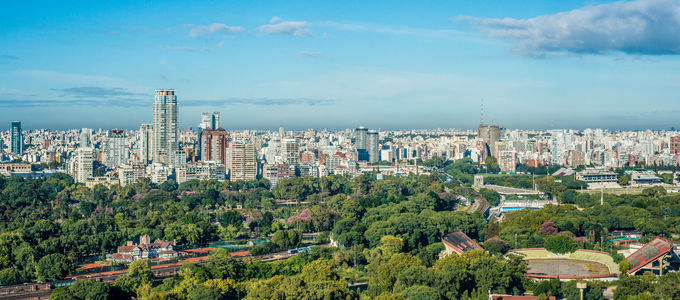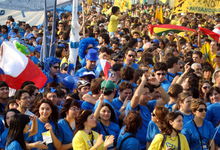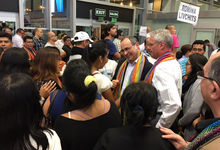A packed agenda in the "City of Good Air"
A city that was founded twice, and a region that was once the focal point of a struggle for independence: these are the two travel destinations on Chief Apostle Jean-Luc Schneider's upcoming trip to Argentina.

"Ciudad de Trinidad"—such was the name of the city on the Río de la Plata when it was established by the Spanish conquistador Juan de Garay in 1580. However, he was not the first to settle the area. Already in 1536, Pedro Mendoza had tried to gain a foothold here, but starvation and conflicts with the native peoples had driven the settlers away. Only a portion of the original name—"Ciudad del Espíritu Santo y Puerto de Santa María del Buen Ayre" (City of the Holy Spirit and Port of the Holy Virgin Mary of Good Air)—remains today.
Buenos Aires (Ciudad Autónoma de Buenos Aires) is the capital of Argentina and the seat of the nation's government. With some three million citizens, it constitutes the core of "Gran Buenos Aires", one of the largest metropolitan regions of the southern hemisphere with a population of around 13 million inhabitants.
A boost in growth from South Africa
After the First World War, many Europeans immigrated to South America in search of better living conditions. Among them were many New Apostolic Christians. Two congregations in the province of Buenos Aires were among the very first congregations on the continent. At first, the divine services were conducted in the German language.
The South African Apostle Heinrich Franz Schlaphoff, who visited South America for the first time in 1930, provided some new impetus: more and more congregations and districts were established. And the sermons were soon held in the national language of Spanish. The later Chief Apostle Helper had brought these ideas along from his original working area of South Africa.
A central church for special occasions
Today there are eighteen New Apostolic congregations in the capital city of Buenos Aires. In 1968 a central church, which offers seating for up to 1,500 people and is only used for special occasions, was dedicated in Buenos Aires. The visit of Chief Apostle Schneider over the coming weekend will provide two such occasions: on Saturday, 1 April 2017 the venue will host a choral and orchestral concert, and on Sunday, 2 April 2017, it will be the site of a divine service that is to be transmitted by video throughout the entire District Apostle district.
However, the Chief Apostle is not planning to travel home for a while yet: on Monday, 3 April, there will be an American District Apostle Meeting. And on Tuesday, his travels will take him to the province of Mendoza, in the west of the country, which lies some 1000 kilometres away from Buenos Aires. This region's economy is based primarily on agriculture and is home to the largest wine region of Argentina.
A base for establishing congregations
The New Apostolic faith began to spread through this region with the immigration of German families in the 1940's and 1950's. One of the first gathering places was located in the city of Godoy, which then became a support base for establishing further congregations in the region. The first church building in the Mendoza region was dedicated in 1970. An estimated 1,800 members from the provincial capital and the neighbouring regions will participate in the divine service with the Chief Apostle on Wednesday, 5 April 2017.
The province is historically known for its role in the struggle for independence at the start of the nineteenth century. General José de San Martín established his Andean Army in Mendoza and crossed the Andes in a spectacular undertaking that marked the starting beat in a decisive victory over the colonial power of Spain.
Photo: Anibal Trejo
Article info
Author:
Date:
Keywords:
Andreas Rother
27.03.2017
Argentina,
journeys of Chief Apostle,
Congregational life






